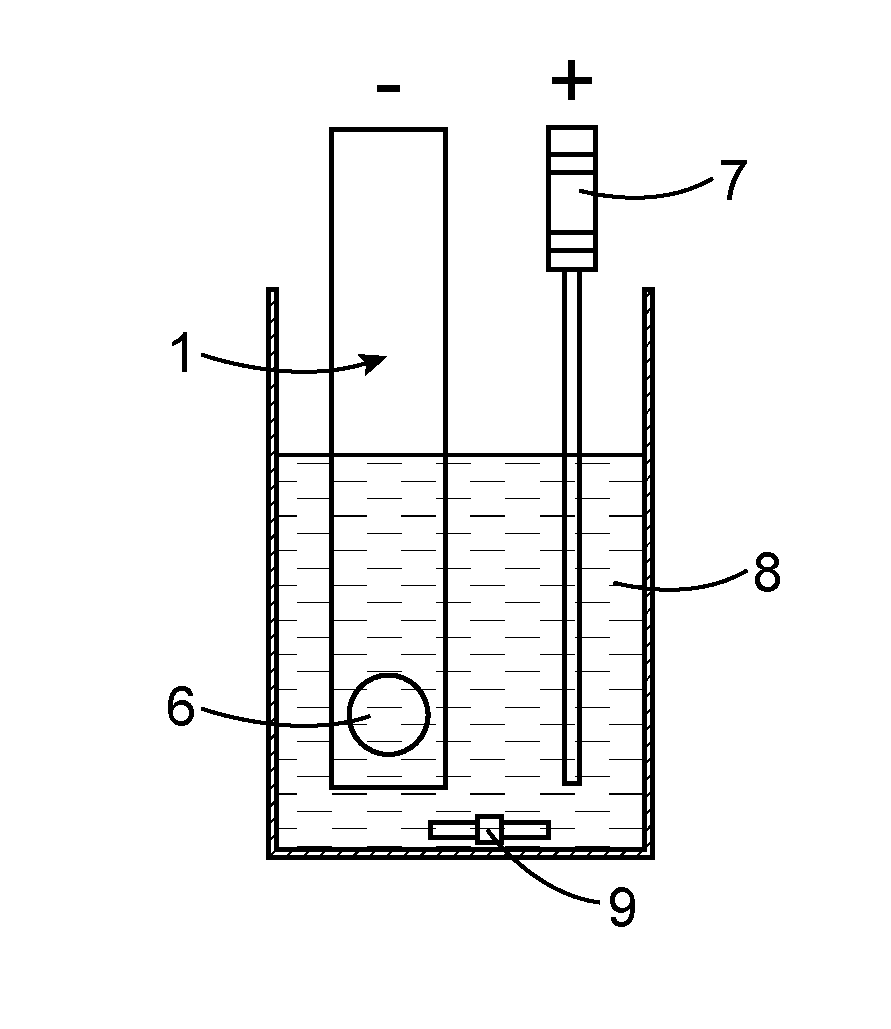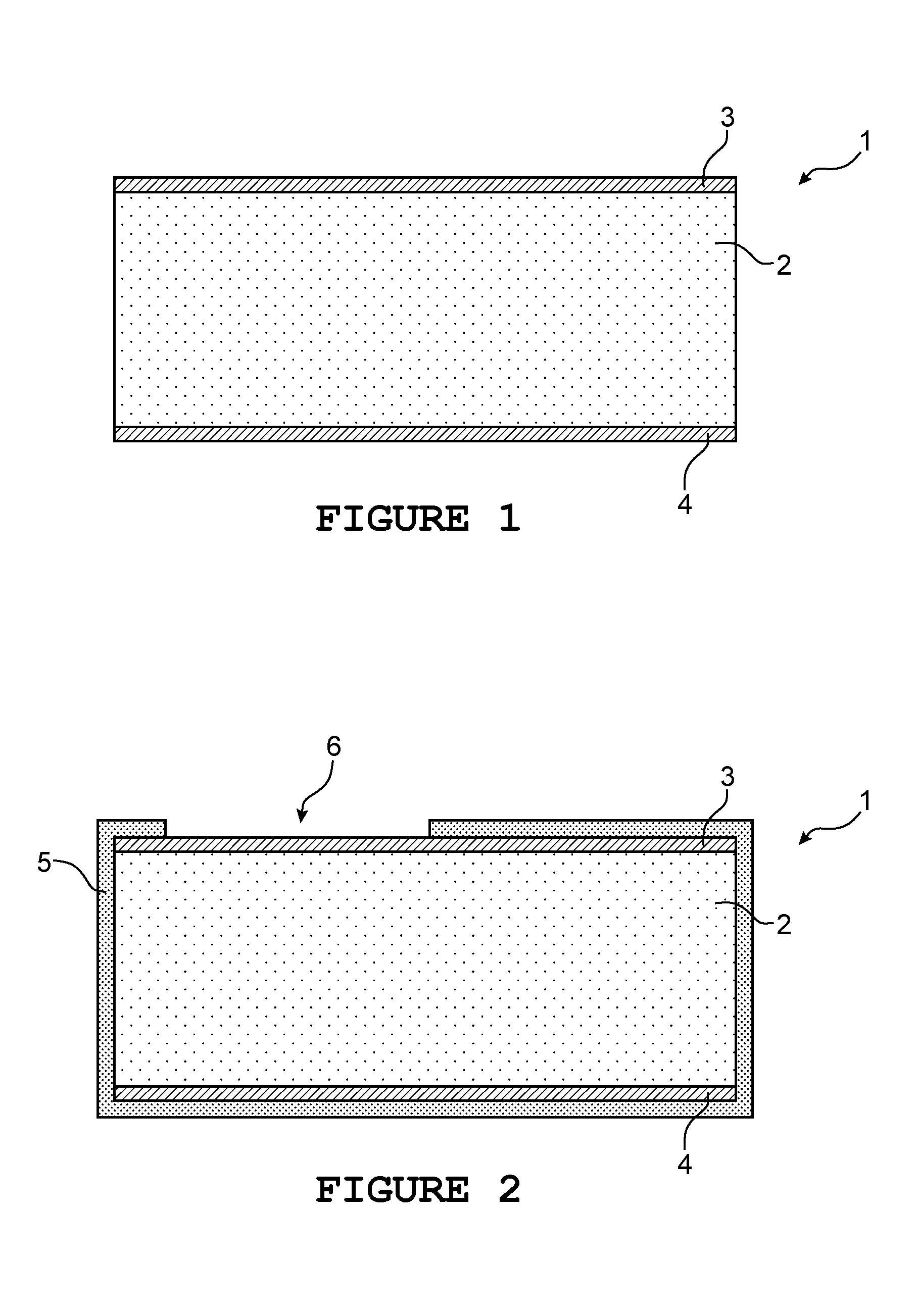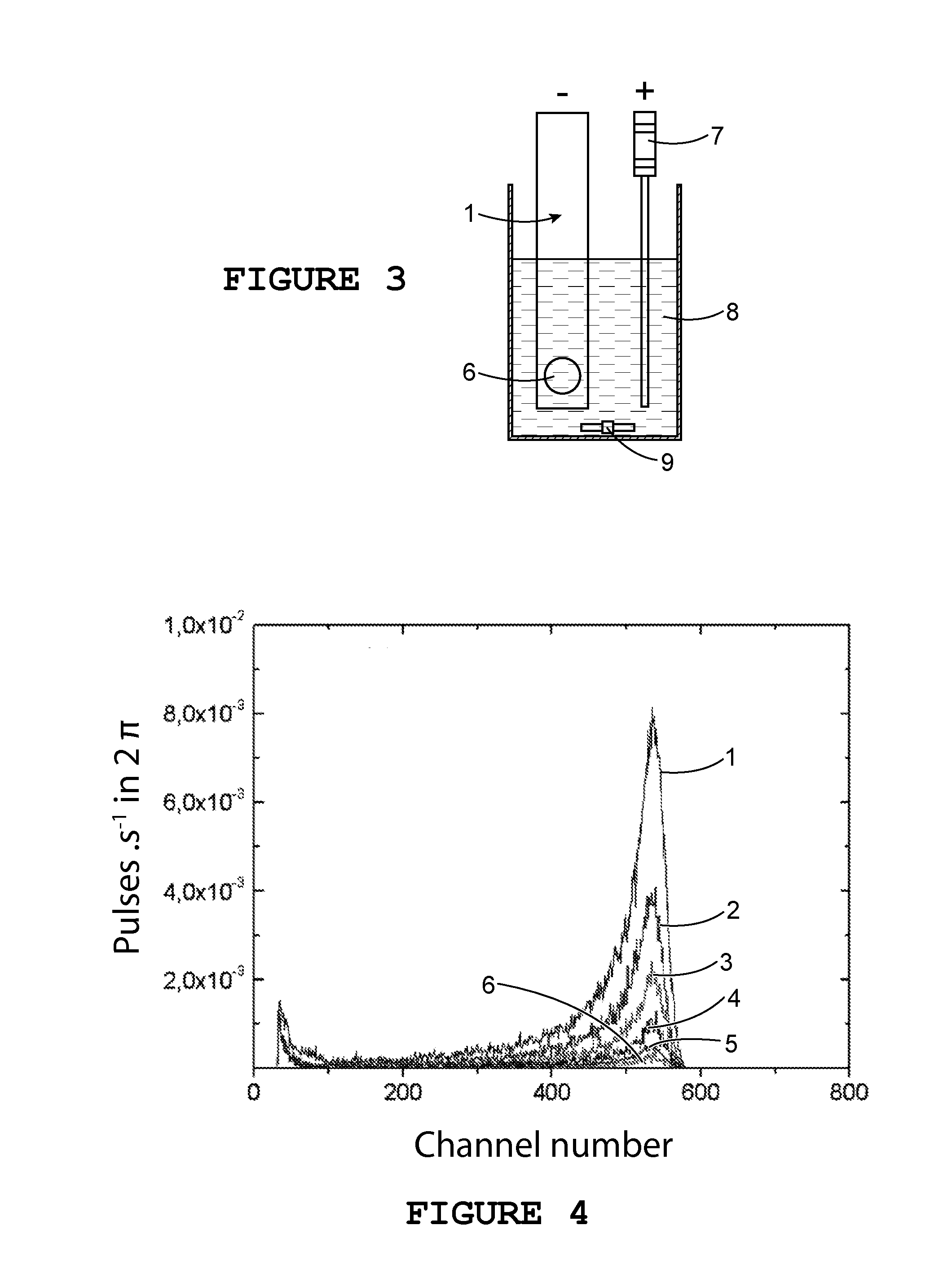Detection method using an electrochemically-assisted alpha detector for nuclear measurement in a liquid medium
a detection method and technology of nuclear measurement, applied in the direction of radiation measurement, instruments, photographic processes, etc., can solve the problems of limited performance of the technique, large effluent production of the nuclear industry, and long separation, purification and preparation of samples
- Summary
- Abstract
- Description
- Claims
- Application Information
AI Technical Summary
Benefits of technology
Problems solved by technology
Method used
Image
Examples
example 1
Measurement of a Range of 241Am Activity with System SM #1
[0151]System SM #1 is a detection system including a detector and an electrode as described above, and in which the detector's first contact has a detection window with an area of 0.17±0.01 cm2.
[0152]In a beaker of 50 mL useful volume, 40 mL of a solution of [Na2SO4]=0.3 M, which has been previously adjusted to a pH of 4.5 using diluted H2SO4, is introduced.
[0153]This solution has been marked by increasing quantities of 241Am in a range of activity of 0.6 to 30 Bq and has been subjected to constant stirring at 1000 rotations.min−1.
[0154]Between each addition of americium an alpha counting is undertaken using system SM #1, and it is then decontaminated, before, in all cases, a background noise is measured before any new deposition of radioactive material.
[0155]The successive electroprecipitations of americium were undertaken over a period of 2 hours at a cathode current density Jc equal to −6 mA / cm2.
[0156]The decontaminations ...
example 2
Measurement of a Range of 241Am Activity with System SM #2
[0169]System SM #2 is a detection system including a detector and an electrode as described above, and in which the detector's first contact has a detection window with an area of 0.39±0.01 cm2.
[0170]In a beaker of 50 mL useful volume, 40 mL of a solution of [Na2SO4]=0.3 M, which has been previously adjusted to a pH of 4 using diluted H2SO4, is introduced.
[0171]This solution has been marked by increasing quantities of 241Am in a range of activity of 0.6 to 30 Bq and has been subjected to constant stirring at 1000 rotations.min−1.
[0172]Between each addition of americium an alpha counting is undertaken, followed by decontamination of the system, before, in all cases, a background noise is measured before any new deposition of radioactive material.
[0173]The successive electroprecipitations of americium were undertaken over a period of 2 hours at a cathode current density Jc equal to −1.6 mA / cm2.
[0174]The decontaminations of the ...
example 3
Electrochemical Decontamination of the Systems
[0182]As an example, we undertook a nuclear measurement of system SM #1 after electroprecipitation of 241Am having an activity of 2.87 Bq in the electrolyte; the measured net count rate is 0.08 counts per second.
[0183]This system is then subjected to electrochemical decontamination according to the following procedure.
[0184]Initially, system SM #1 is rinsed with a solution of [H2SO4]=0.1 M, and is then placed in a beaker of 50 mL useful volume containing 40 mL of a solution of [Na2SO4]=0.3 M with no prior pH adjustment (pH ˜6.5).
[0185]The first contact of the system's detector is connected to the (+) pole of the current generator and the system's counter-electrode consisting of a platinum wire is connected to the (−) pole of this same current generator.
[0186]Electrochemical decontamination of the system is undertaken in galvanostatic mode at an anode current density of Ja=+6 mA / cm2 with stirring (1000 revolutions per minute) for a period...
PUM
| Property | Measurement | Unit |
|---|---|---|
| concentrations | aaaaa | aaaaa |
| current density | aaaaa | aaaaa |
| electrically conductive | aaaaa | aaaaa |
Abstract
Description
Claims
Application Information
 Login to View More
Login to View More - R&D
- Intellectual Property
- Life Sciences
- Materials
- Tech Scout
- Unparalleled Data Quality
- Higher Quality Content
- 60% Fewer Hallucinations
Browse by: Latest US Patents, China's latest patents, Technical Efficacy Thesaurus, Application Domain, Technology Topic, Popular Technical Reports.
© 2025 PatSnap. All rights reserved.Legal|Privacy policy|Modern Slavery Act Transparency Statement|Sitemap|About US| Contact US: help@patsnap.com



